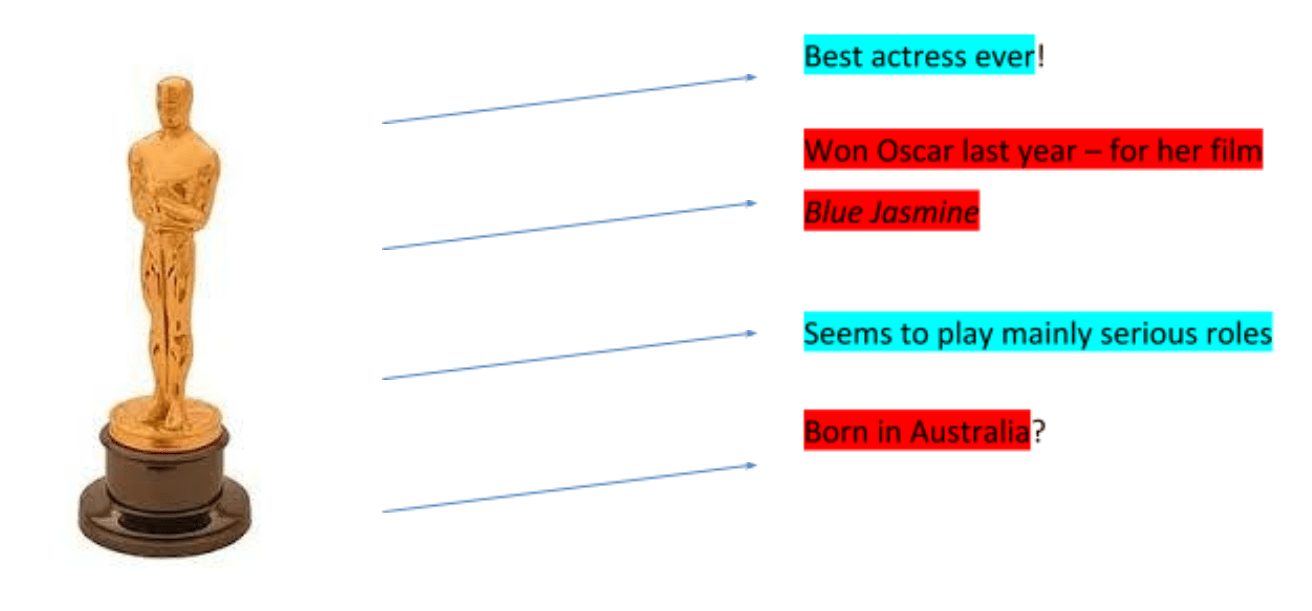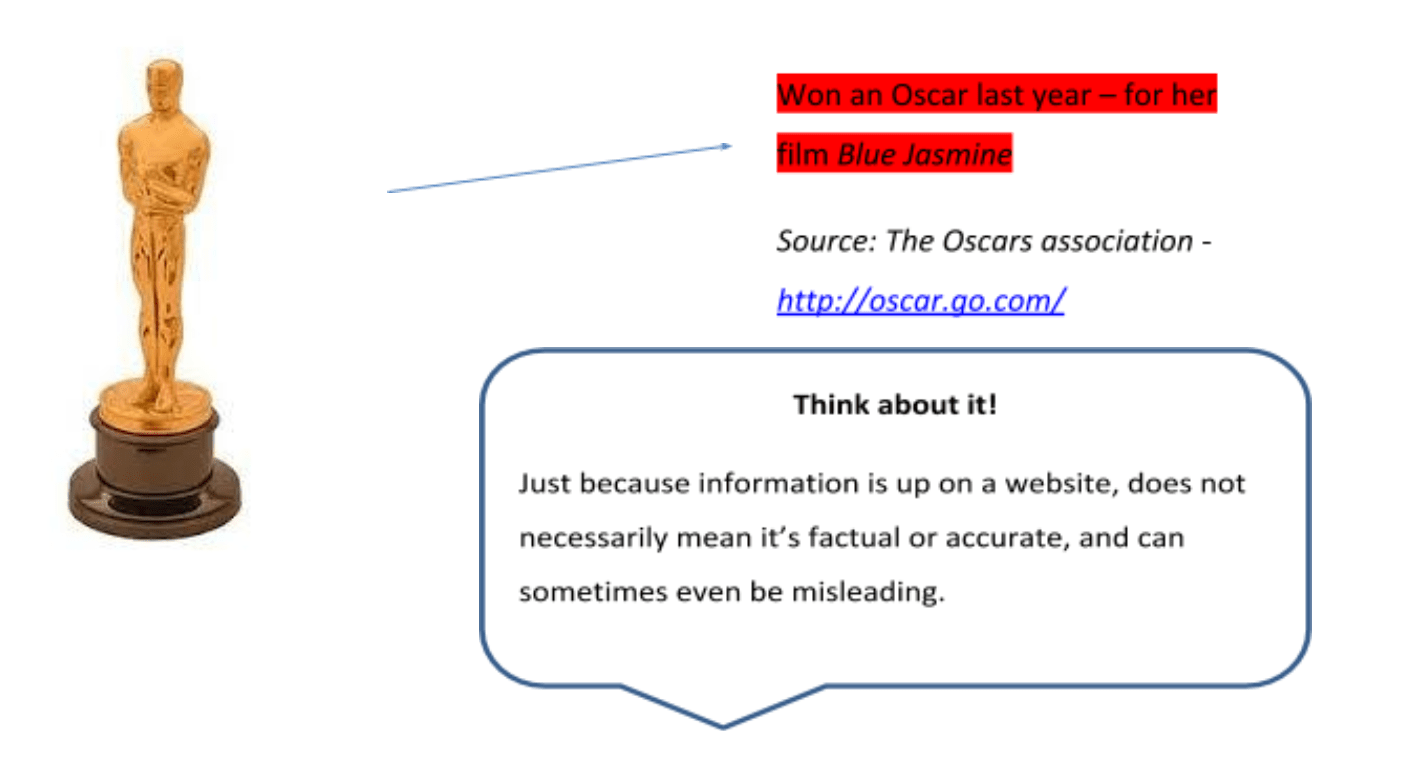Important keywords: source, credibility, verify
What do I have to do?
In this project you are going to do an investigation into the life of a celebrity – somebody famous in music, sport, film, art, politics, comedy or other area. Besides increasing your knowledge, the task aims to lift your critical awareness – more on this later, but for now, think of yourself as wearing a pair of glasses that improves your ability to judge fact from opinion, and read between the lines. These critical thinking lenses help you to read into what is said, and not said; in other words, where the information is trying to get you to think a particular way, that you may not even be aware of.
Task 1 – Use any mind mapping app of your choice to brainstorm a celebrity or famous person you admire or would like to meet. Copy in a picture, label them by their real name (and stage or celebrity name, birthday, age, the country they live in and where they were born).
Task 2 – Around the picture, brainstorm as much as you know about the celebrity (or think you know), including what you have heard and read, your own beliefs and views, and any experiences you connect with them.
Task 3 – Pause and reflect on the information you have captured. Highlight in red all you know is fact, that is, you could back up your claims (the statements you have made). In other words, your claims could be checked against solid evidence to prove their accuracy. For example, highlight in blue any information that is mainly opinion, or your beliefs and feelings. Although they are real and personal to you, not everyone would share your views, feelings, beliefs, or claims.
 Task 4 – Does your brainstorm support more ‘blue’ (opinion) than ‘red’ (fact)?
Task 4 – Does your brainstorm support more ‘blue’ (opinion) than ‘red’ (fact)?
Task 5 – To make your claims in ‘red’ more ‘credible’ or trustworthy, they need to be ‘verifiable’.
Task 6 – Find a credible source on the internet to support your claims highlighted in red. The source is the author, publisher or provider of the information. For example: the source of my claim that Cate Blanchett won an Oscar award in 2014, is The Oscars, which can be verified at the official organisation website.
 Task 7 – There is a lot of information on the internet that can be published by anyone with a digital device, whether they are qualified to make those claims or not.
Task 7 – There is a lot of information on the internet that can be published by anyone with a digital device, whether they are qualified to make those claims or not.
Where possible it is ‘smart’ thinking to verify information from an:
- organisation – one that is an authority in the topic you are searching (for example, the Human Rights Organisation, Screen Actors Guild, Ministry of Health). These organisations are often ‘not for profit or gain’, so they are not a money making business [The sites often use .org; .edu; .ac; in their website address names]
- edited source – the information has been edited and checked before publishing by qualified peers in that field (like a newspaper editor, medical journal, encyclopaedia).
Task 8 – Do a general search online to find out more about your celebrity. Fill in your brain storm or mind map with pictures and claims. Try to be more aware about where your information is coming from. Remember to fill in the source name and website address underneath each claim.
Task 9 – Now let’s do a little test to check the credibility of one of your sources. A ‘smart’ way to help guide you in using verifiable and credible sources of information is to use a 5 step strategy called ‘2AO Double D’. Here is a link to an example source that I have used to verify information on my celebrity: Template for Judging the Credibility of Online Website
- Make a copy of the template as a Google Doc
- Add a row with one of the sources for your celebrity information
- Complete the information for each of the headings by making brief notes answering the question prompts
- When you have finished, ask yourself, do you generally feel the information is credible?
Task 10 – Underneath your brainstorm write a couple of statements about what you have learnt through this project. Use all of the key words in the keyword list at the beginning of the task instructions in your explanation.
Task 11 – Share your learning (by blog post or by having a learning conversation with a parent or sibling or showing your teacher what you have learnt independently).

